Removal and Installation
Front Brake Pad Inspection and ReplacementReplacement
1. Raise the front of the vehicle, and support it with safety stands in the proper locations. Remove the front wheels.
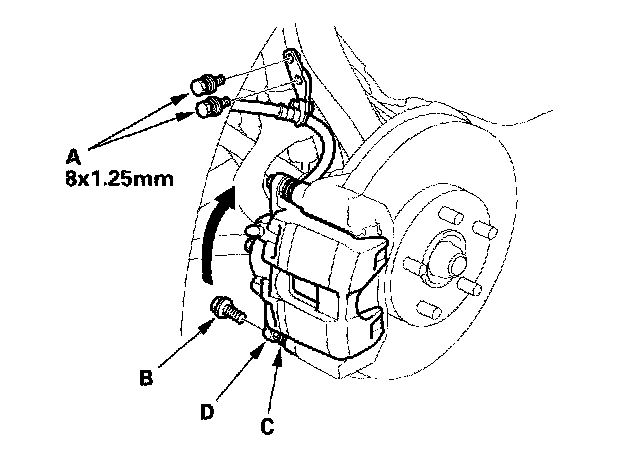
2. Remove the brake hose mounting bolts (A).
3. Remove the flange bolt (B) while holding the sub pin (C) with a wrench being careful not to damage the pin boot, and pivot the caliper (D) up out of the way. Check the hose and pin boots for damage and deterioration.
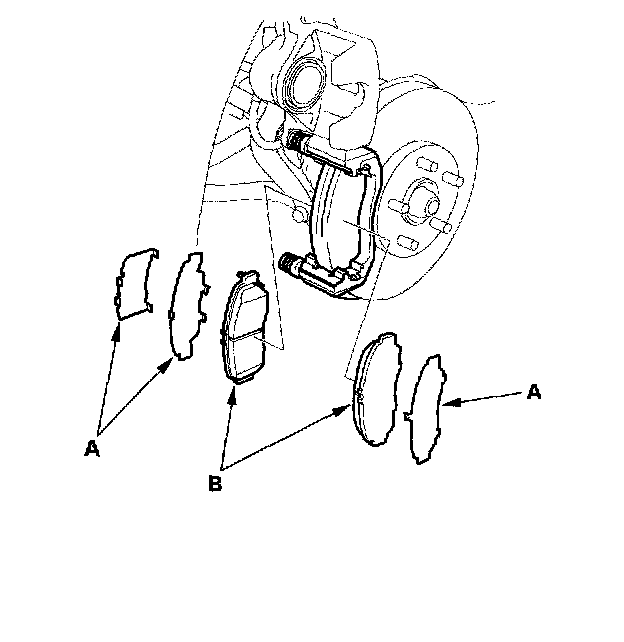
4. Remove the pad shims (A) and pads (B).
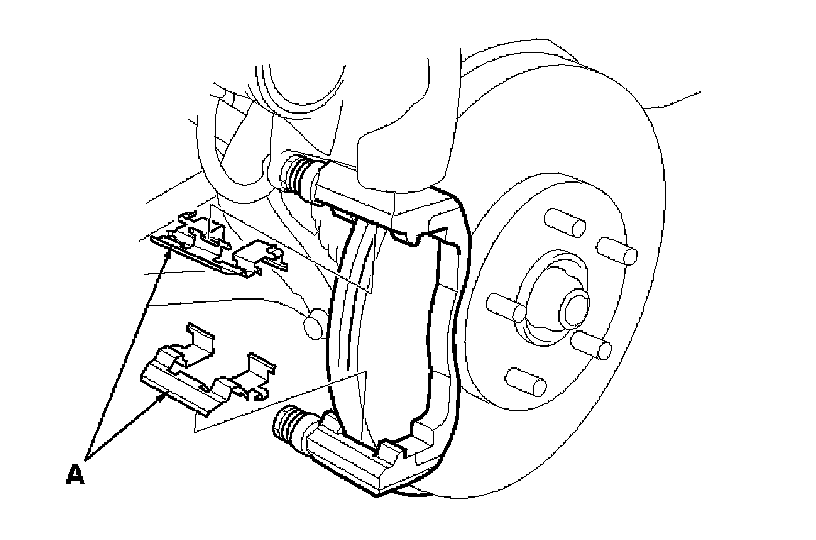
5. Remove the pad retainers (A).
6. Clean the caliper thoroughly; remove any rust, and check for grooves and cracks.
7. Check the brake disc for damage and cracks.
8. Clean and install the pad retainers.
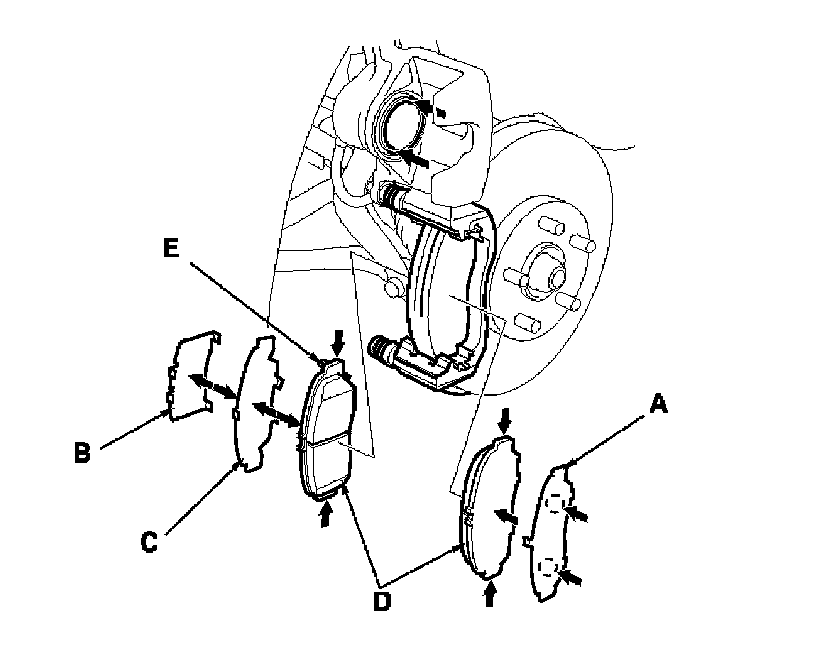
9. Apply Molykote M77 grease (P/N 08798-9010) to the pad side of pad shim A, B. both sides of pad shim C, the back of pads (D), and to the other areas indicated by the arrows. Wipe excess grease off the shims and pads. Contaminated brake discs or pads reduce stopping ability. Keep grease off the brake discs and pads.
10. Install the brake pads and pad shims correctly. Install the pad with the wear indicator (E) on the inside.
If you are reusing the pads, always reinstall the brake pads in their original positions to prevent a momentary loss of braking efficiency.
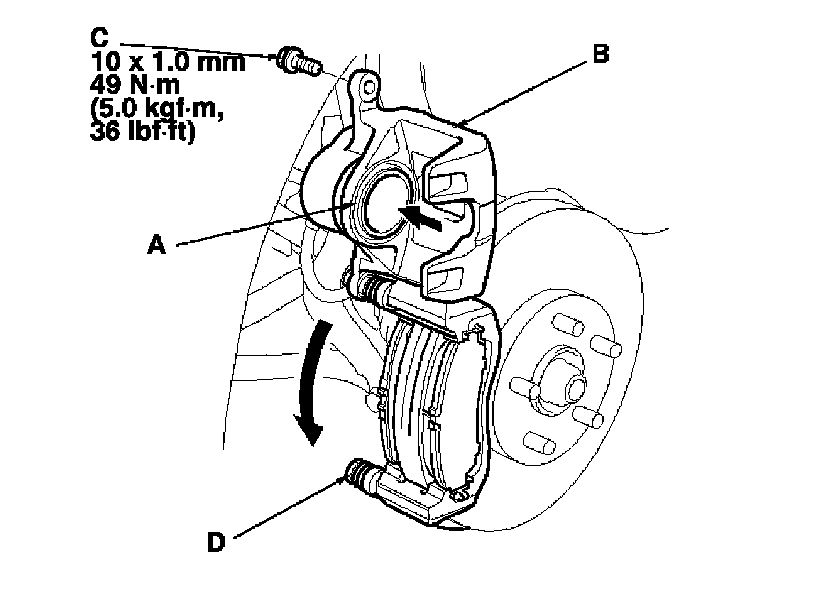
11. Push in the piston (A) so the caliper will fit over the pads. Make sure the piston boot is in position to prevent damaging it when pivoting the caliper down.
12. Pivot the caliper (B) down into position. Install the flange bolt (C), and torque it to the specified torque while holding the sub pin (D) with a wrench being careful not to damage the pin boot.
13. Install the brake hose mounting bolt, and tighten it to the specified torque.
14. Press the brake pedal several times to make sure the brakes work, then test-drive the vehicle.
NOTE: Engagement of the brake may require a greater pedal stroke immediately after the brake pads have been replaced as a set. Several applications of the brake pedal will restore the normal pedal stroke.
15. After installation, check for leaks at hose and line joints or connections, and retighten if necessary.